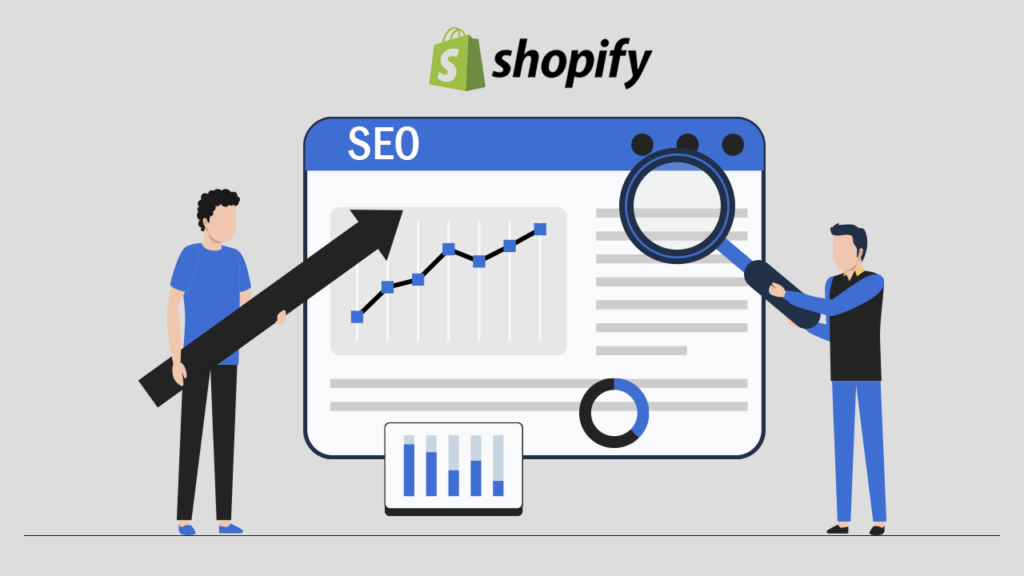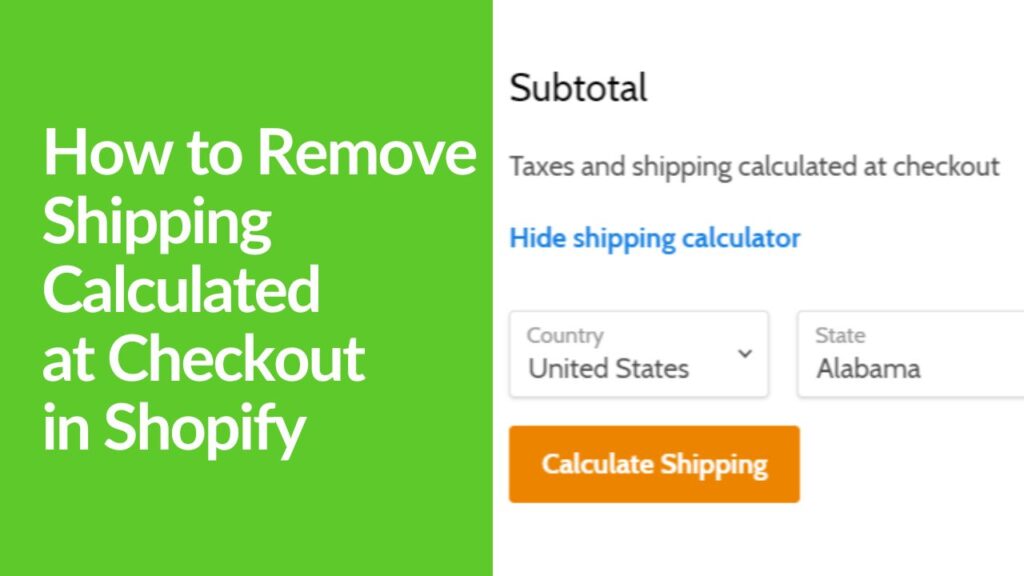SEO works like a beacon in the vast ocean of the internet. It helps your store stand out in search engine results, making it easier for potential customers to find you. But it’s not just about getting more people to click on your site. Shopify SEO brings in quality traffic—folks who are actively searching for what you offer.
Key Takeaways:
- SEO brings in quality traffic of potential customers searching for products.
- Use Shopify analytics tools to track traffic sources, conversion rates, and keyword rankings.
- Make data-driven decisions to optimize the Shopify SEO strategy.
Are you looking to take your Shopify store to the next level and dominate the search engine results? Well, you’re in luck because today, we’re diving deep into the world of Shopify SEO and uncovering advanced techniques to skyrocket your online visibility.
Introduction to Shopify SEO
So, what exactly is Shopify SEO, and why does it matter? In simple terms, Shopify SEO refers to the process of optimizing your online store to rank higher in search engine results pages (SERPs). With millions of online stores vying for attention, having a solid SEO strategy is crucial for driving organic traffic and increasing sales.
First off, think of SEO as your secret weapon to make your online store more visible to people searching for products like yours on search engines like Google. It’s like putting up a bright signpost on the internet highway, directing traffic straight to your digital storefront.
Now, when you optimize your Shopify store for search engines, you’re essentially fine-tuning it to rank higher in search results. That means when someone types in a keyword related to your products, your store pops up closer to the top of the list. And we all know, the closer you are to the top, the more likely folks are to click on your link. But how does this translate into more sales? Well, think about it this way: the internet is like a vast marketplace, and Shopify SEO is like your stall’s location. If your stall (or in this case, your Shopify store) is tucked away in a quiet corner where nobody goes, you’re not going to sell much. But if it’s right in the middle of the busiest street, where everyone passes by, you’re bound to get more foot traffic and, consequently, more sales.
Now, let’s talk about how to make this happen. It’s not just about stuffing your product descriptions with keywords (that’s so 2010!). It’s about creating high-quality, engaging content that not only appeals to search engines but also to your potential customers. This means writing product descriptions that are not only descriptive but also persuasive. You want to answer any questions they might have about your products and highlight what makes them stand out. Oh, and don’t forget about those meta tags and descriptions—they might seem small, but they play a big role in getting those clicks.
And hey, SEO isn’t just about words. It’s also about visuals. So make sure your images are high-quality, and properly optimized, and include alt text to describe them. Because you never know, someone might stumble upon your store through an image search.
So, in a nutshell, Shopify SEO is all about getting your products in front of more eyeballs, attracting more potential customers, and ultimately, boosting those sales. It’s like giving your online store a VIP pass to the digital marketplace. And who wouldn’t want that, right?
Understanding the Basics of SEO
Before we delve into advanced techniques, let’s cover the basics. SEO, or search engine optimization, is the practice of optimizing your website to improve its visibility on search engines like Google, Bing, and Yahoo. By optimizing various elements of your site, you can increase your chances of ranking higher for relevant keywords and attracting more organic traffic.
- SEO involves optimizing websites to improve visibility on search engines like Google.
- Optimization includes various elements to rank higher for relevant keywords and attract organic traffic.
Optimizing Your Shopify Store Structure
One of the first steps in boosting your Shopify store’s SEO is to optimize its structure. This involves selecting a responsive and SEO-friendly theme, creating clean and descriptive URLs, and optimizing your site’s navigation to ensure a seamless user experience.
Picture your Shopify store as a house. Before you start decorating the rooms, you need to make sure the foundation is solid, right? That’s what optimizing the structure is all about. You want to pick a theme for your store that not only looks good but also plays nice with search engines. Then, tidy up your URLs so they’re clear and descriptive – think of them as signposts that tell both visitors and search engines where to find things. And don’t forget about navigation! You want it to be smooth sailing for anyone visiting your store, so make sure they can easily find what they’re looking for without getting lost in the digital aisles.
Crafting Compelling Product Descriptions
When it comes to SEO, content is king. In the world of e-commerce, this means crafting compelling product descriptions that not only entice customers but also incorporate relevant keywords to improve search engine visibility. Imagine you’re walking through a bustling market. What catches your eye? Probably the stalls with vibrant displays and enticing descriptions, right? Well, the same goes for online shopping. Your product descriptions need to grab people’s attention and make them want to buy what you’re selling. But here’s the Shopify SEO twist – sprinkle in some keywords related to your products. These are the words and phrases that people might type into a search engine when looking for something like what you’re selling. By including them in your descriptions, you’re not only making your products sound irresistible but also helping them show up higher in search results. It’s like casting a wider net to reel in more customers.
Leveraging Content Marketing Strategies
When it comes to elevating your Shopify store’s SEO game, don’t overlook the power of content marketing. It’s not just about product descriptions; content can be your secret weapon. Think about starting a blog where you can delve into topics related to your niche, share valuable insights, and showcase your expertise.
Guest posting on relevant websites within your industry is another savvy move to expand your reach and earn valuable backlinks. And let’s not forget about leveraging social media channels to distribute your content far and wide, driving traffic back to your Shopify store while also boosting your SEO through social signals.
In addition to product descriptions, content marketing can also play a significant role in boosting your Shopify store’s SEO. Consider starting a blog, guest posting on relevant websites, and leveraging social media channels to share valuable content and attract backlinks.
Enhancing User Experience
User experience is a crucial factor in SEO rankings. Ensure your Shopify store is optimized for mobile devices, improves page loading speed, and features a user-friendly interface to keep visitors engaged and coming back for more.
User experience isn’t just important for keeping visitors happy—it’s also a crucial factor in Shopify SEO rankings. Ensuring your Shopify store is optimized for mobile devices is non-negotiable in today’s mobile-first world. A seamless, responsive design not only enhances user experience but also sends positive signals to search engines.
Additionally, optimizing your site for lightning-fast page loading speeds can significantly improve your SEO performance. And of course, a user-friendly interface that’s easy to navigate ensures visitors stay engaged and keep coming back for more—a win-win for both user experience and SEO.
Harnessing the Power of Keywords
Keywords are the foundation of any SEO strategy. Conduct thorough keyword research to identify relevant terms and phrases your target audience is searching for. Then, strategically incorporate these keywords into your product listings, blog posts, and other content to improve your chances of ranking higher in search results.
Keywords are the backbone of any effective SEO strategy, and Shopify SEO is no exception. It all starts with comprehensive keyword research to identify the terms and phrases your target audience is typing into search engines. Look for high-volume keywords relevant to your products or industry, as well as long-tail keywords that offer more specific targeting opportunities.
Once you’ve identified your target keywords, strategically incorporate them into your product listings, blog posts, meta tags, and other content throughout your Shopify store. But remember, it’s not just about stuffing keywords everywhere; aim for natural, organic integration that enhances the user experience while signaling to search engines what your content is all about.
Monitoring and Analyzing Performance
Finally, don’t forget to monitor and analyze your Shopify store’s performance regularly. Use Shopify analytics tools to track key metrics like traffic sources, conversion rates, and keyword rankings. By staying informed about your store’s performance, you can make data-driven decisions to continually optimize your Shopify SEO strategy. Don’t overlook the importance of monitoring and analyzing your Shopify store’s performance on a regular basis.
Shopify offers a robust set of analytics tools that allow you to track key metrics such as traffic sources, conversion rates, and keyword rankings. By keeping a close eye on these metrics, you can gain valuable insights into what’s working well and what areas need improvement. Armed with this data, you can make informed, data-driven decisions to continually optimize your SEO strategy and keep your Shopify store performing at its best.
Conclusion
In conclusion, unlocking Shopify’s SEO potential requires a combination of strategic planning, creative content creation, and continuous optimization. By implementing the advanced techniques outlined in this article, you can elevate your Shopify store’s visibility and attract more organic traffic, ultimately driving sales and growth. SEO is like planting seeds for long-term growth. Once you’ve optimized your site and earned those top rankings, you’ll continue to reap the rewards month after month. It’s an investment in the future success of your store.
FAQs
How long does it take to see results from Shopify SEO efforts?
While SEO is a long-term strategy, you may start seeing improvements in your store’s rankings and traffic within a few weeks to months, depending on various factors such as competition and the effectiveness of your optimization efforts.
Is it worth investing in paid advertising alongside SEO for my Shopify store?
Paid advertising can complement your SEO efforts by providing immediate visibility while you work on improving organic rankings. However, SEO offers long-term benefits and can drive sustainable traffic to your store without ongoing ad spend.
What are some common mistakes to avoid when optimizing a Shopify store for SEO?
Common mistakes include neglecting mobile optimization, keyword stuffing, ignoring technical SEO issues, and failing to update and add fresh content to your site regularly.
How often should I update my Shopify store’s content for SEO purposes?
Aim to update your content regularly to keep it fresh and relevant. This could involve adding new products, blog posts, or updating existing content with the latest information or trends in your industry.
What role do backlinks play in Shopify SEO?
Backlinks from reputable websites can significantly impact your Shopify store’s SEO by improving your site’s authority and credibility in the eyes of search engines. Focus on acquiring quality backlinks from relevant sources to enhance your SEO efforts.




